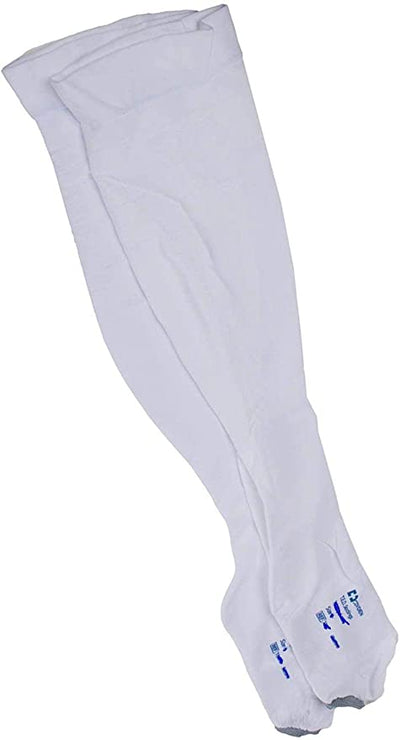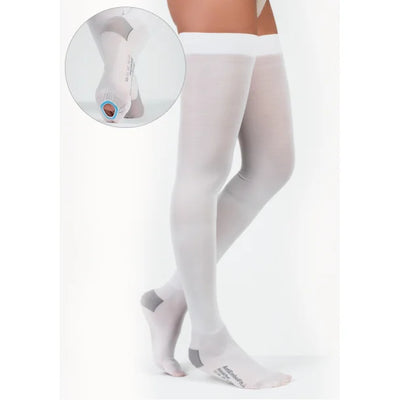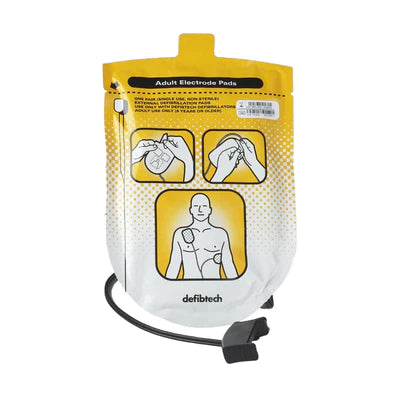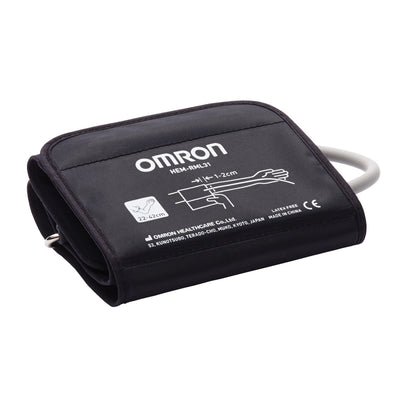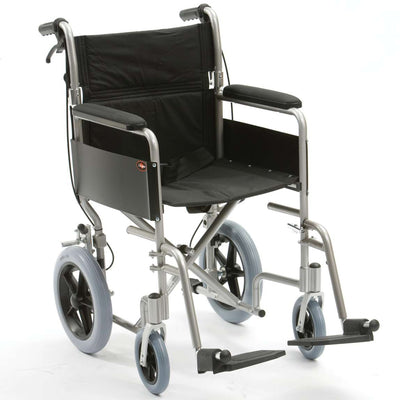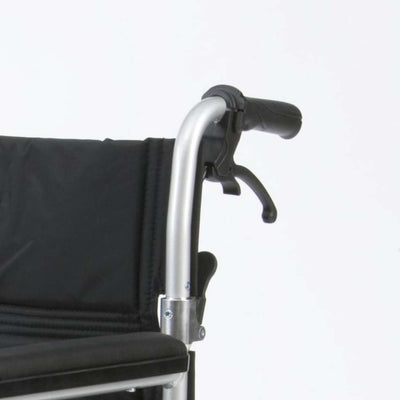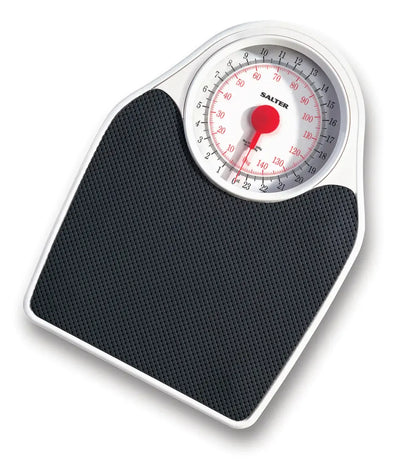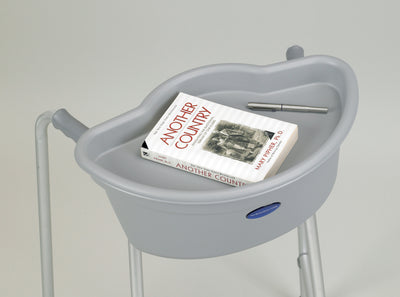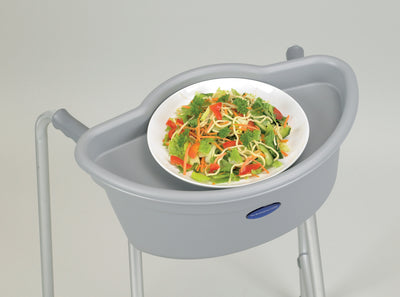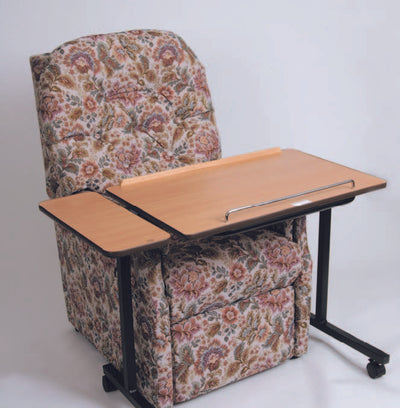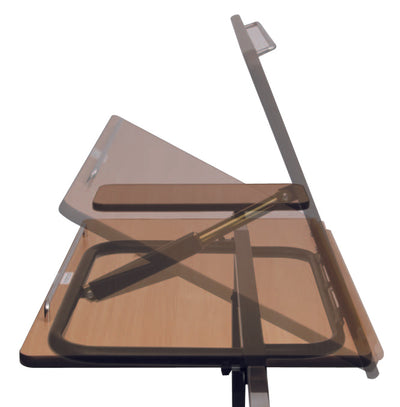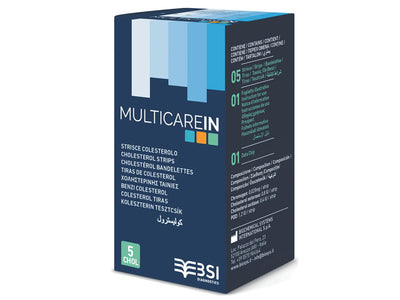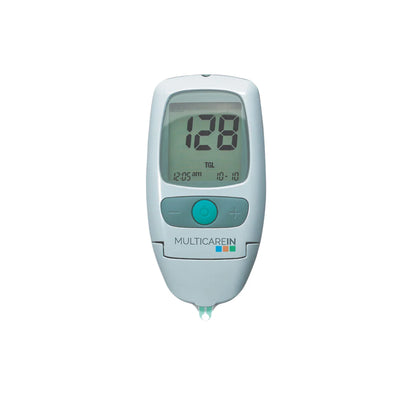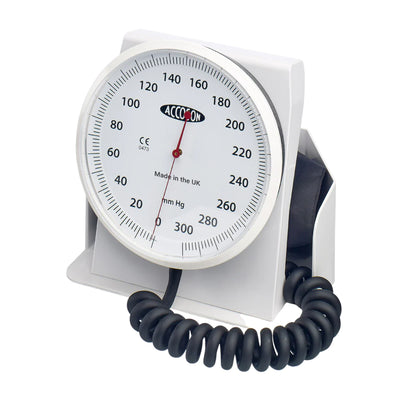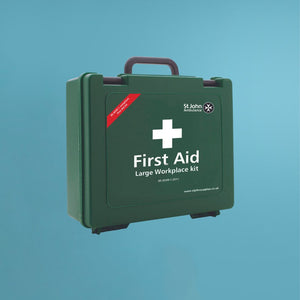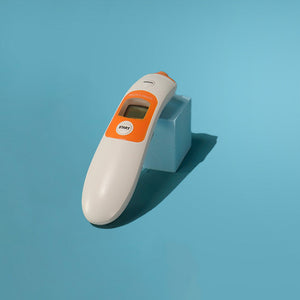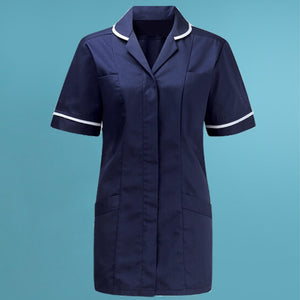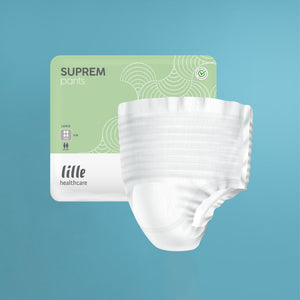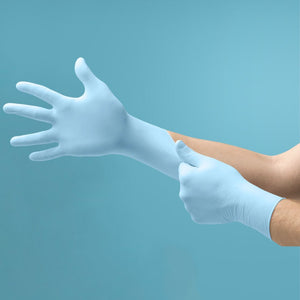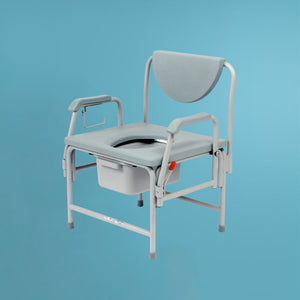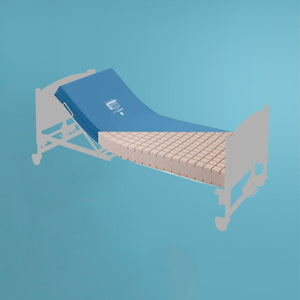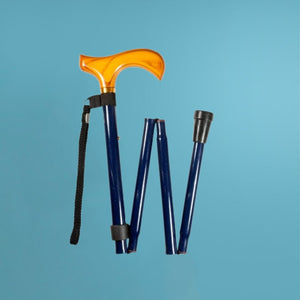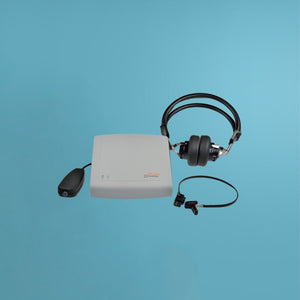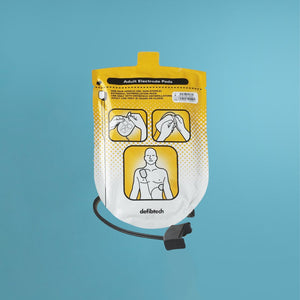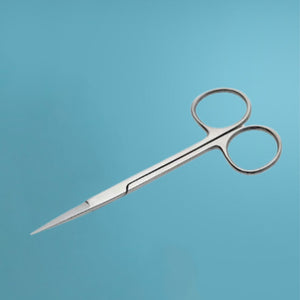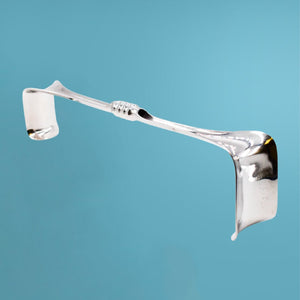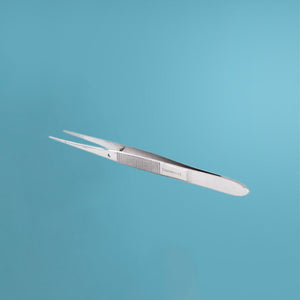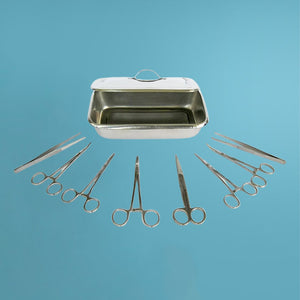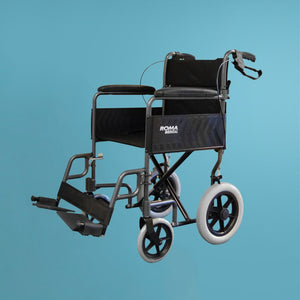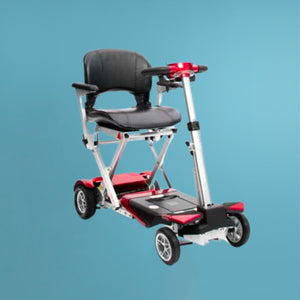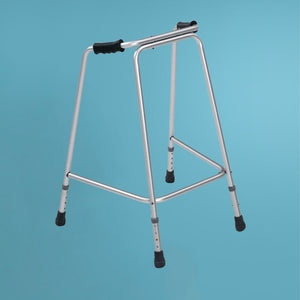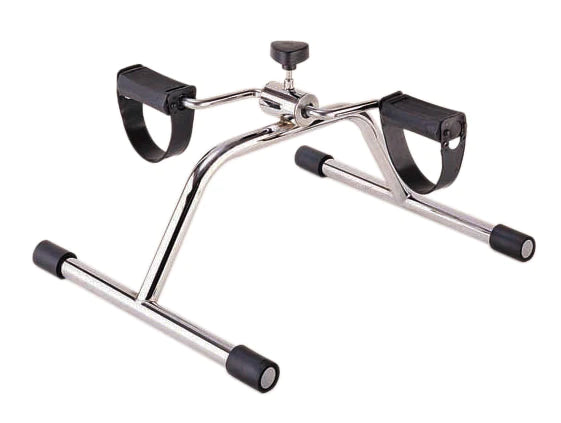You've been stuck on the couch for weeks recovering from a knee surgery, and you're itching to get moving again. With walking and high impact exercise still off the table, you're searching for a simple and yet effective way to get back on your feet without exerting too much stress on your healing knee. You've come to the right place!
The pedal exerciser isn't just for people recovering from knee surgeries. This compact yet powerful device lets you get in a cardio workout right from the comfort of your favourite spot, and is practically ideal for anyone and everyone. With just a few minutes a day, you get to feel your energy levels rise, strength return, and mood brighten.
Best of all, pedalling is low impact so you can exercise safely without risking re-injury. With the aid of a pedal exerciser, you'll be pedalling your way to recovery in no time.
How a Pedal Exerciser Can Help With Rehab
Before we delve deeper, it’s best practice to understand what a pedal exerciser is. A pedal exerciser is a small, lightweight pedal machine used for upper and lower body exercises. They're great for an at-home workout but are particularly useful for use in rehab patients or those with arthritic pain.
A pedal exercise can be a fun and engaging way to rehab an injury or improve your range of motion. You'll be able to get your blood pumping and joints moving by using it without overworking your body.
Now to the fun part; how does it help with rehab?
- Low Impact Exercise: Pedalling is a low-impact activity that is easy on the joints. Therefore, a pedal exerciser allows you to exercise while avoiding high-impact activities when recovering from an injury. In this case, you're in control of the resistance level, so you can start light and build up your endurance over time.
- Improved Circulation: Pedalling causes your blood to flow, allowing more oxygen to reach your muscles and tissues. This can help to alleviate pain and accelerate healing. For desk workers or those with mobility issues, a pedal exerciser is perfect for improving circulation when walking isn't possible. Better circulation also means less swelling in the ankles and legs.
- Increased Flexibility and Range of Motion: The range of motion in your hips, knees, and ankles can be improved by pedalling both forward and backward. This easy workout helps to lubricate the joints and warm up the muscles, making it great for anyone suffering from arthritis or joint stiffness.
Since the pedal exerciser is simple and low-impact, it provides a great way to get the advantages of exercise right at home. Plus, It may not entirely be for rehabilitation. It could also be used for general fitness and circulation improvement.
Choosing the Right Pedal Exerciser for Your Needs
A pedal exercise is a great way to start rehabbing at home, but with so many options out there, how do you know which type to choose?
First of all, consider your needs. A quick question to ask yourself is:
"Do I want a full range of motion for my legs or just gentle exercise?"
For light to moderate use, a basic model with adjustable tension will work great, but if you need a higher intensity, look for a heavier flywheel and a wider range of resistance.
Next, think about size and portability. A smaller model can slide under a desk or table when not in use. Larger pedal exercisers with sturdier frames provide more stability if balance is an issue. Some even fold up for storage or travel.
Don’t forget about your comfort! Padded or adjustable seats and ergonomic pedals make exercising a more pleasant and sustainable experience. It's best to look for a model with straps or toe loops to keep your feet securely in place.
Lastly, check out the extras. Things like built-in monitors to track time, speed, distance and calories burned can help keep you motivated. Some pedal exercisers also have reverse motion for added challenge and variety.
Setting Up Your Pedal Exerciser for Optimal Use
Setting up your pedal exerciser can be difficult, but with the right instructions and consistent practice, you'll be a pro in no time.
First, you have to:
- Find the Perfect Spot
Place your pedal exerciser in an area where you'll use it regularly, like in front of the TV or next to your desk. Having it in plain sight will make you more likely to hop on for a quick spin.
An open space without a lot of foot traffic is ideal so you have room to pedal freely without bumping into furniture or other people.
- Adjust the Tension
Start at a lower tension level and build up as your endurance improves. Turn the tension knob or push the level buttons to increase or decrease the difficulty.
Find a level that provides moderate resistance but still allows you to pedal at a steady pace for 10-15 minutes. You want to be able to exercise continuously without getting overly fatigued.
- Track Your Progress
Use the display screen on your pedal exerciser, if it has one, to establish goals and keep track of your progress. Aim for accumulating 30-60 minutes of pedalling time per day for the best results.
Then, start a timer when you begin pedalling and stop it when you're done to record your total time. Some pedal exercisers also track metrics like speed, distance, calories burned and RPMs (revolutions per minute) to help keep you motivated. Try to increase your speed and RPMs over time as your legs get stronger.
- Stay Hydrated and Stretched
Be sure to drink plenty of water before, during and after your pedalling workout. Staying hydrated will give you more energy and help your muscles recover.
Doing some light stretching before hopping on the pedals can also help prevent injury and make pedalling feel more comfortable.
Exercises You Can Do With a Pedal Exerciser
A pedal exercise opens up a whole new world of rehab exercises you can do right from the comfort of your own home. Get those legs pumping and your heart rate up with these fun options; but first how do you incorporate other exercises with just a pedaler?:
There are fun exercises you can add to your routine to create diversity and stimulate your interest. These exercises include:
Seated Leg Extensions
Sit up straight in a chair and place your feet on the pedals. Push down using only your leg muscles to spin the pedals forward. Release and repeat for several minutes. This works your quadriceps, hamstrings and glutes. Start with higher resistance to really feel the burn!
Arm Pedalling
Sit with the pedal exerciser in front of you and place your hands on the pedals instead of your feet. Push and pull the pedals, using only your arms to spin them. This provides an aerobic workout for your arms and shoulders. Start with a lower resistance and build up as your endurance improves.
Seated Marches
While seated, place one foot at a time on the pedals and push down to spin, alternating feet like marching in place. This helps improve hip mobility and flexibility. For low-impact, march without resistance. Add resistance for a more vigorous cardio workout.
Pedaling Techniques for Rehabbing Different Injuries
Pedalling is an excellent way to recover from injuries, but the methods you employ can change depending on what you're recovering from.
Here are some recommendations for the most typical injuries:
- Knee injuries
If you're recovering from a knee injury like an anterior cruciate ligament (ACL) tear or meniscus damage, start with low resistance and higher reps, around 50-100 reps per session. This helps lubricate your knee joint and increase flexibility without stressing it. As your knee improves, slowly increase the resistance.
- Ankle sprains
For a sprained ankle, pedalling in reverse can help. Pedal backwards at a moderate pace for just 5-10 minutes a day. This motion flexes your ankle in the opposite direction of a sprain, helping to loosen tight tendons and ligaments. You'll be back on your feet in no time!
- Hip injuries
If you have hip bursitis or an impingement, keep your pedalling cadence on the higher end, around 80-100 RPMs. This faster pace helps warm up the hip joint and keeps muscles flexible and mobile. Start at a lower resistance and build up as your hip starts to feel better. Hip stretches and icing the joint can also provide relief in combination with pedalling.
- Low back pain
For chronic low back pain, an upright seated position is best. Pedal at a moderate pace and resistance for 15-30 minutes a day. This helps increase blood flow to the lower back muscles, loosens tight areas, and gently mobilises the spine. Be sure to take breaks if your back fatigues. Icing and gentle yoga can complement your pedalling routine.
You can customise your pedalling workout to target particular areas by modifying variables like resistance, pace, duration, and body posture. Nevertheless, consistency and patience is key. Stay positive, as you may not see immediate results, but with time it all falls into place – you've got this!
Frequently Asked Questions: Using a Pedal Exerciser for Rehab
Will using a pedal exerciser really help with my rehab?
Absolutely! Pedal exercisers are a great way to gently and gradually build up strength and range of motion after an injury or surgery. The repetitive motion of pedalling helps improve flexibility and mobility in your joints and muscles. It also increases blood flow to the area you're rehabbing, which speeds up healing.
How often should I use the pedal exerciser?
For the best results, aim to use your pedal exercise 3-5 times a week, starting with just 10–15 minutes at a time and building up as your endurance improves. Be sure to start slowly and listen to your body. You can do multiple short sessions throughout the day if needed. The key is to keep those joints and muscles moving regularly without overdoing it.
How much resistance should I use?
Start with little or no resistance when you first begin using the pedal exerciser. You want to focus on regaining range of motion and flexibility. As your strength builds up over days and weeks of use, you can gradually increase the resistance using the tension knob. Start with slow movements first; only increase it by small increments. It's better to start too easy than too hard. You never want to push through pain.
What other tips do you have?
- Start your session with 5–10 minutes of gentle stretching to warm up your muscles.
- Keep your pedalling motion smooth and steady. Don't jerk your legs.
- Consider doing leg exercises in between pedalling sessions to strengthen your muscles.
- Stay hydrated and consider icing sore areas when done.
- Ask your doctor about taking over-the-counter pain medication before use if needed.
- Consider using a pedal exercise with reverse motion to work your legs in both directions.
In conclusion, staying active and mobile is very important, especially as we age or recover from injuries. So, what are you waiting for? Get out there and find an affordable pedal exerciser so you can start reaping the benefits. Your body and mind will thank you for the gentle exercise and mental boost. Consultation with your GP or physiotherapist is always recommended, particularly for post-operative patients.
For all your Medical and Homecare supplies give us a call at Mediworld.
We have over 40 years of experience in medical, surgical and home health supplies and we're always on hand to chat if you need support, assistance or advice.
Be sure to follow us on Twitter and Facebook to get updated on new updates just for you.
